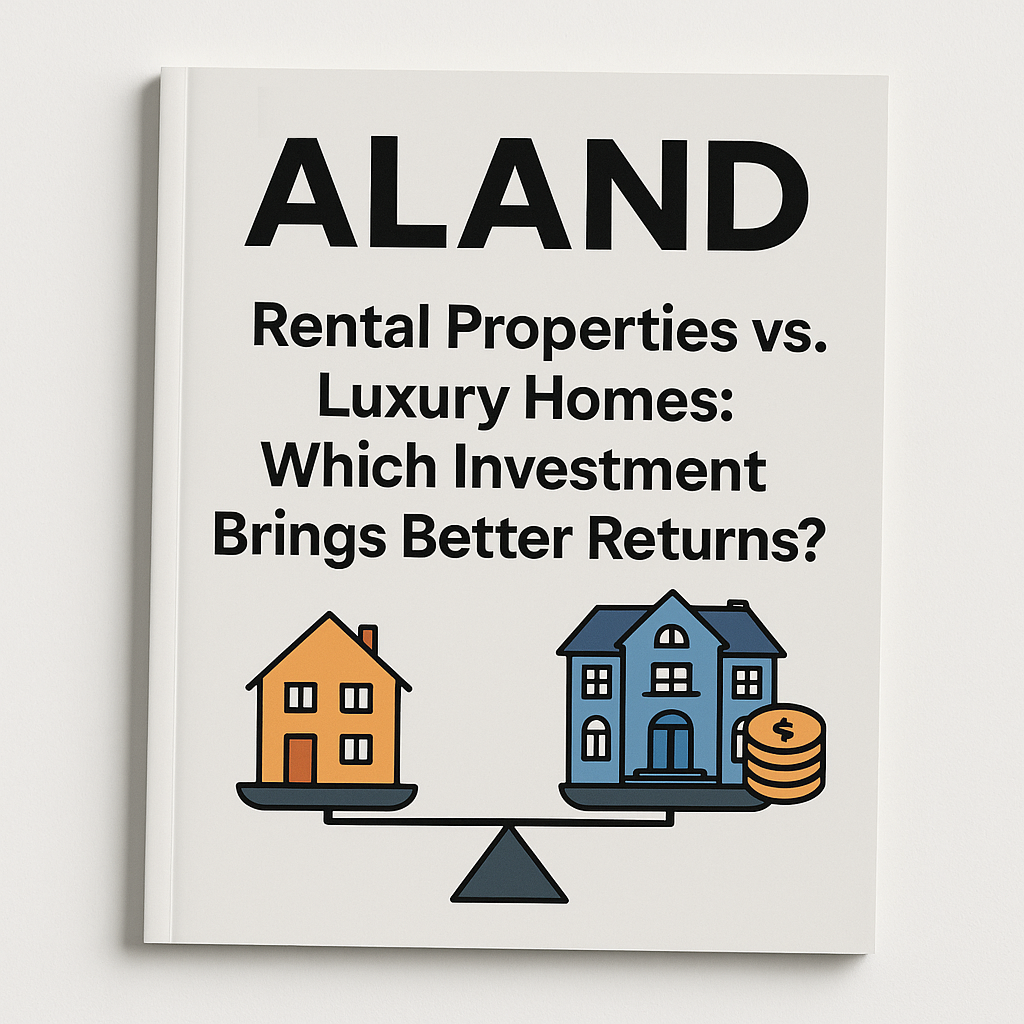Rental Properties vs. Luxury Homes: Which Investment Brings Better Returns?
- Published Date: 7th Jul, 2025
-
4.8★ ★ ★ ★ ★(96)

Listen to the podcast for this article
When weighing rental properties against luxury homes as investment vehicles, the answer hinges on nuanced economic, market, and strategic factors. Dr. Pooyan Ghamari, Swiss economist and founder of the ALand Platform, advocates a data-driven approach grounded in global economic insight and technological innovation to discern which asset class delivers superior returns.
Comparing Cash Flow Stability and Capital Appreciation
Rental properties typically generate consistent cash flow through monthly rents, making them attractive for investors seeking steady income streams. In contrast, luxury homes often depend on capital appreciation over time, driven by scarcity, prestige, and market demand in high-net-worth neighborhoods. Dr. Ghamari notes that rental property investors benefit from diversification across multiple units, mitigating vacancy risks, whereas luxury home investments concentrate risk in a single, high-value asset.
The economic cycle plays a decisive role. During downturns, luxury homes can experience sharper price corrections, while rental properties may maintain demand as affordability tightens. Conversely, in bullish markets, luxury properties often outpace rental properties in appreciation, delivering outsized capital gains.
The Role of Market Dynamics and Geographic Trends
Globalization and international capital flows heavily influence luxury home markets. Dr. Ghamari points out that affluent foreign investors seeking safe havens or residency incentives frequently drive demand for luxury real estate in stable jurisdictions. Platforms like ALand facilitate access to emerging luxury markets by offering real-time data on international investment trends and immigration-linked property opportunities.
Rental markets, meanwhile, respond more directly to local economic conditions such as employment rates, wage growth, and urbanization patterns. The rise of remote work and shifting demographics are reshaping rental demand, a trend meticulously tracked on the ALand Blog, highlighting areas where rental yields are expected to outperform.
Branding, Cause-Related Marketing, and Investor Confidence
Dr. Ghamari emphasizes that incorporating cause-related marketing into real estate portfolios enhances brand image and stakeholder trust. For instance, rental property firms engaging in sustainable development or affordable housing initiatives generate goodwill, boosting tenant loyalty and investor appeal. Luxury home developers adopting eco-friendly designs and community engagement projects similarly benefit from enhanced prestige and differentiated market positioning.
Research shows that companies integrating social responsibility see improved brand sentiment and measurable ROI through heightened consumer engagement. Tools available on the ALand Platform support the deployment of these campaigns, providing analytics to track brand impact and investor response.
Cryptocurrency and New Investment Paradigms
The intersection of cryptocurrency and real estate offers novel investment pathways. EE Gold, a gold-backed digital currency, enables seamless, secure transactions and diversification, particularly in cross-border luxury home deals. Dr. Ghamari highlights how cryptocurrencies reduce friction and currency risk, facilitating faster settlement and greater transparency.
For rental properties, blockchain applications and tokenization allow fractional ownership and increased liquidity, democratizing access for smaller investors while opening new capital streams. The The ALand Times regularly covers these transformative trends reshaping both asset classes.
Practical Takeaways for Corporations and Investors
-
Assess investment goals: Prioritize cash flow stability with rental properties or capital appreciation with luxury homes depending on risk appetite and timeline.
-
Leverage data analytics: Use platforms like ALand to monitor market shifts, tenant demographics, and international capital movements.
-
Integrate ESG initiatives: Build cause-related marketing campaigns to enhance brand value and attract impact investors.
-
Explore tokenization: Consider fractional ownership models to diversify portfolios and increase liquidity.
-
Utilize cryptocurrency: Incorporate EE Gold for secure, efficient cross-border investments, especially in luxury real estate.
For deeper analysis and to explore innovative tools and market insights, visit the ALand Blog, explore the ALand Platform, learn about EE Gold, and stay updated with The ALand Times. These resources illuminate the evolving landscape of real estate investment and digital economy integration.

